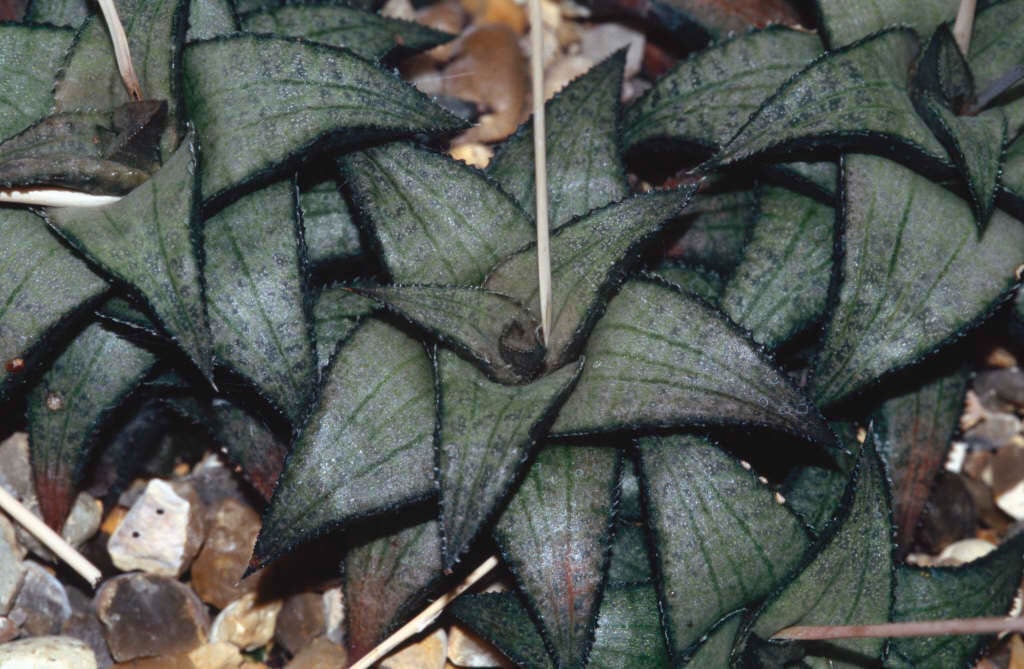Haworthia venosa subsp. tesselata
veined haworthia
A succulent forming a mat of rosettes of very fleshy, triangular grey-green leaves to 7cm long, netted above with pale lines. Tubular greenish-white flowers 2cm long are borne in racemes on stems to 45cm
Synonyms
Haworthia tesselata var. engleriHaworthia venosa subsp. tesselata
see moreHaworthia tesselata

Buy this plant
Size
Ultimate height
Up to 10cmTime to ultimate height
2–5 yearsUltimate spread
0–0.1 metreGrowing conditions
Moisture
Well–drainedpH
Alkaline, NeutralColour & scent
| Stem | Flower | Foliage | Fruit | |
| Spring | Green White | Green White | ||
|---|---|---|---|---|
| Summer | Green White | |||
| Autumn | Green White | |||
| Winter | Green White |
Position
- Full sun
Aspect
North–facing or East–facing
Exposure
Sheltered Hardiness
H2Botanical details
- Family
- Asphodelaceae
- Native to GB / Ireland
- No
- Foliage
- Evergreen
- Habit
- Matforming
- Genus
Haworthiopsis are stemless succulent perennials forming rosettes of thick-skinned, fleshy leaves often with raised white tubercles, and with upright racemes of tubular, two-lipped flowers
- Name status
Correct
- Plant range
- S. Africa, Namibia
How to grow
Cultivation
Grow under glass in a standard cactus compost, in full light. Provide low humidity. Water freely when in growth and keep just moist at other times. Apply a dilute low nitrogen fertilizer fortnightly during late spring and summer. Stand outside in summer
Propagation
Propagate by seed or offsets
Suggested planting locations and garden types
- Patio and container plants
Pruning
No pruning required
Pests
May be susceptible to mealybugs
Diseases
Generally disease-free
Get involved
The Royal Horticultural Society is the UK’s leading gardening charity. We aim to enrich everyone’s life through plants, and make the UK a greener and more beautiful place.